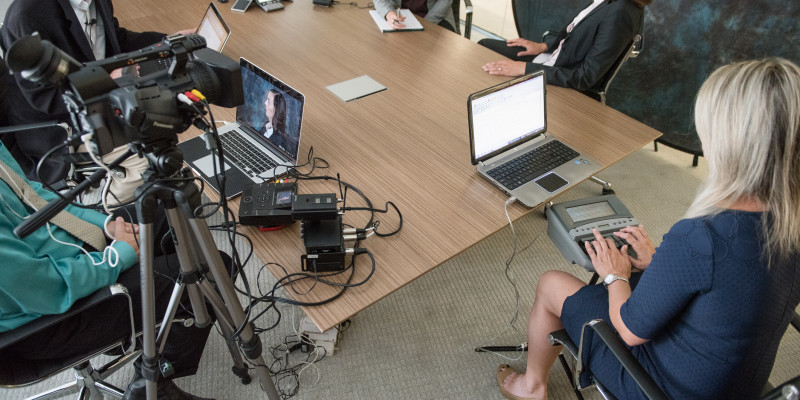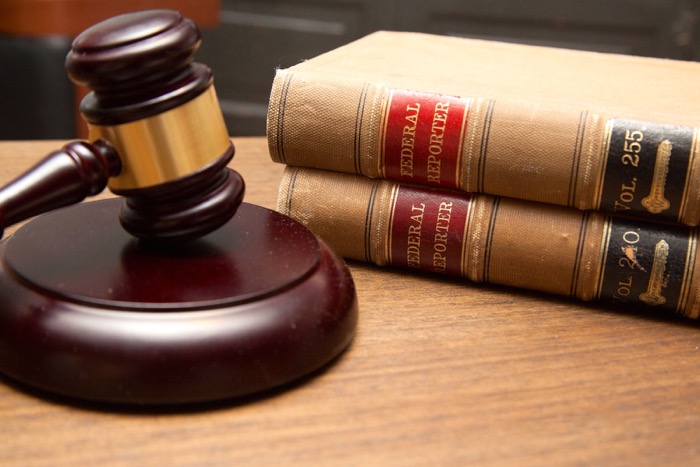The impact of durham court reporting on legal research
Wiki Article
Exactly How Court Reporting Functions: A Step-by-Step Overview to the Lawful Process
Court reporting is a critical part of the lawful system. It includes a structured procedure that guarantees accurate documents of proceedings. From preparation to the last delivery of records, each action is important. Understanding exactly how stenotype reporter operate deals understanding into the stability of legal records. The subtleties of their job can exceptionally influence lawful results, motivating questions concerning the methods and innovations they use. What are the particular techniques that define this profession?The Duty of Court Reporters in the Legal System
Court reporters play an essential function in the lawful system by giving precise and dependable transcripts of court proceedings. Their work warranties that every talked word throughout hearings, depositions, and tests is recorded, which is essential for maintaining a main document of events. This transcription is basic for appeals, as it enables greater courts to evaluate the procedures and establish if any type of mistakes were made during the trial.Furthermore, court reporters help in maintaining the integrity of the legal procedure by creating verbatim documents that can be described by lawyers, judges, and various other events involved in a situation. They usually utilize specific tools and software application to record discussion with accuracy. Beyond the courtroom, their transcripts can function as vital historic documents, providing understanding right into judicial process and the legal system's functioning. Ultimately, stenotype reporter contribute considerably to openness and liability in lawful issues.
Getting ready for a Court Reporting Session
Prep work is vital for an effective court reporting session, as it ensures the precision and effectiveness of the transcription procedure. Stenotype reporter start by examining situation materials, including pleadings and witness lists, to acquaint themselves with the terms and context. They additionally make sure that they have the essential devices, such as steno equipments, note pads, and back-up gadgets, on-line.Before the session, interaction with legal teams is vital. Reporters often clarify any kind of details demands pertaining to format or liked terminology. Additionally, they might prepare to fulfill with attorneys or witnesses to discuss the process and validate the timetable. Showing up early to establish up the tools enables for troubleshooting potential technological problems. Overall, thorough prep work not only enhances the press reporter's confidence but additionally contributes greatly to generating a exact and clear document of the legal process.

Capturing the Document: Methods and Equipment
Using innovative methods and dependable tools, stenotype reporter meticulously capture the talked word throughout legal process. They employ stenography, an approach entailing a specialized maker that allows them to type numerous sounds all at once, thus recording dialogue in genuine time. This equipment, referred to as a steno keyboard, is outfitted with keys that represent words and syllables, enabling swift and precise input.
Along with stenography, court reporters may use audio recording tools as supplemental devices. These devices function as back-ups, ensuring that no vital details is shed during proceedings. Additionally, some press reporters incorporate software that boosts their transcription effectiveness, using functions such as voice recognition and automated format.
Proper positioning and focus are critical; reporters should preserve interest on all audio speakers, catching subtleties and inflections that add to the document. Via a mix of ability and technology, stenotype reporter copyright the integrity of the legal procedure by making certain a comprehensive and exact document of events.
Transcribing the Proceedings
Transcribing the process calls for stenotype reporter to transform spoken dialogue right into created message with outstanding precision and speed. This process typically happens quickly after the recording has actually been caught, utilizing specialized software application that enables smooth transcription. Stenotype reporter must pay attention diligently to the audio, ensuring that every inflection, word, and time out is accurately stood for in the records.They typically rely upon shorthand systems, individual transcription skills, and advanced modern technology to facilitate this job. The setting in which they work can be busy and often chaotic, as lawful proceedings usually include multiple audio speakers and technical lingo. Stenotype reporter have to likewise keep concentration to record nuances in tone and context that might be Website important for the lawful record. Inevitably, the precision of the transcription is critical, as it works as a certification for future referral in legal process.
Evaluating and Modifying the Transcript
The procedure of assessing and modifying the records is vital for making sure accuracy in court reporting. Stenotype reporter usually work together with lawyers to clear up any obscurities and verify the accuracy of the recorded statements. This collaboration is essential for keeping the integrity of the legal record.Value of Precision
Accuracy offers as the keystone of effective court reporting, as even minor mistakes can substantially alter the significance of legal proceedings. The reviewing and modifying procedure is essential in making certain that records mirror the talked word with fidelity. Court reporters thoroughly validate names, technological terms, and lawful jargon to preserve accuracy. This focus to information helps prevent misunderstandings that might affect instance outcomes. Accuracy fosters trust among lawful professionals, clients, and the court, strengthening the stability of the judicial system. Mistakes can lead to allures or conflicts, making it crucial for press reporters to fine-tune their job thoroughly. Inevitably, the pursuit of precision not just improves the dependability of the records however likewise upholds the criteria of the lawful career.Collaboration With Lawyers
Cooperation between court reporters and lawyers is essential throughout the assessing and modifying stage of transcript manufacturing. This process ensures that the final record properly mirrors the spoken word and follows lawful requirements. Lawyers typically examine transcripts site for details terminology, context, and any prospective errors that might influence the case. Court reporters rely upon attorneys' experience to clarify unclear areas or emphasize vital statements. Efficient interaction is key; lawyers may provide feedback or request adjustments, which stenotype reporter need to deal with immediately. This partnership not just enhances the high quality of the records but also contributes to a smoother legal procedure. Eventually, joint efforts bring about a reputable and precise record, vital for future recommendations and legal procedures.Providing the Last Transcript to Clients
Upon completion of the transcription procedure, court press reporters thoroughly prepare the final document for delivery to their clients. This last records undertakes comprehensive proofreading to assure precision, as any kind of mistakes can substantially impact legal proceedings. Court press reporters style the file according to the particular needs established forth by the customers or lawful firms, including pagination, indexing, and any type of necessary exhibits.
Lastly, stenotype reporter might offer a cover letter summing up key details and supplying additional assistance if needed. This complete approach warranties that customers get a sleek, specific, and conveniently accessible records, vital for their legal requirements.
Frequently Asked Inquiries
What Qualifications Are Required to Come To Be a Court Reporter?
To become a stenotype reporter, people commonly require a senior high school diploma, completion of a court reporting program, and qualification or licensure, depending on state needs. durham court reporting. Effectiveness in shorthand and technology is also necessary for successThe length of time Does It Take to Total Court Reporting Training?
Normally, finishing court reporting training takes in between 18 months to four years, depending on the program's intensity, the student's pace, and the particular requirements of the jurisdiction in which they wish to practice.
What Is the Ordinary Salary of a Stenotype Reporter?
The typical wage of a court reporter varies by area and experience, typically varying from $45,000 to $100,000 yearly (durham court reporting). Aspects such as expertise and demand can considerably affect their earnings in various regionsAre Court Reporters Required to Have Certification?
Stenotype reporter are normally needed to obtain qualification, which guarantees they have the needed skills and understanding for exact transcription. Certification demands can vary by state or territory, reflecting expert criteria within the lawful community.Can Court Reporters Work From Another Location or Freelance?
Stenotype reporter can function remotely or freelance, giving flexibility in their occupation. Lots of utilize innovation to record proceedings from numerous locations, enabling varied chances in the lawful field while preserving a work-life balance.Court press reporters play an essential role in the legal system by providing reputable and exact records of court process. In addition, court press reporters aid in maintaining the integrity of the legal procedure by developing verbatim documents that can be referred to by lawyers, courts, and other celebrations involved in an instance. Using advanced methods and trusted tools, court press reporters thoroughly capture the spoken word throughout lawful process. Court press reporters have to likewise maintain concentration to catch subtleties in tone and context that may be important for the lawful record. To end up being a court reporter, individuals commonly need a high college diploma, completion of a court reporting program, and qualification or licensure, depending on state needs.
Report this wiki page